|
Keep The Yard
Look, this might appear evident, yet I will undoubtedly say it anyway. Suppose you don't keep your lawn effectively. As a result, your grass will not look the means you desire despite exactly how you sufficed. So, just how do you maintain your lawn effectively? Well, that is a subject onto itself, as well as we do not have time to cover that in this short article, but you can start right here. Presuming you are keeping your lawn adequately, let's move on to Ttip# 2! Tip # 2 The 1/3rd Regulation. BKA Just How Much Should you Cut simultaneously? According to the pros, the best practice is never to reduce more significantly than the top third of the grass blade. Pay attention; this is by no means a hard and fast guideline. It is virtually difficult to follow all of the time. Unless you have the time to cut the yard 10 times a month, or at the very least twice a week, it's just not most likely to happen. Nevertheless, you ought to still mind how much you are cutting simultaneously. Generally, if you reduced the grass weekly in the same setting, your lawn will certainly be perfect the majority of the time. Certainly, hefty rainfall, as well as warm temperatures, will trigger the yard to expand much faster. But, if you can, you should suffice two times a week in those problems. And if your lawn ever obtains too out of control, you should check out Tip # 10. Grass Cutting Tips 2 Suggestion # 3 Just How Reduced Should You Mow? All frequently, I see homeowners scalp their yards by reducing way as well low. Worst of all, they do it over and over again. And also, it's AWFUL FOR THE GRASS! Reducing the lawn as well as brief is one of the worst blunders homeowners can make. Unless your yard is perfectly flat, you should never reduce listed below 3 inches in height without any dips. Why 3 Inches? There are a couple of factors. First of all, when you cut a yard any less than 3 inches. Flaws in your yard are extra noticeable. A slight dip, or change in the height of the dirt in the grass, can easily lead to the blades striking earth. This will undoubtedly cause eliminating the yard because place, and all your hopes and desire for a perfect environment-friendly grass and it! Two, the taller the grass, the more water a grass keeps. Of course, if you let the lawn get long, the water retention will undoubtedly reduce the property a lot more complicated. But, reducing the lawn too reduced can lead to a water-deprived yard. A yard that is just one and a half inches high will rarely stand an opportunity against drought. Maintaining a lawn in between 3 well as 5 inches is ideal for water retention. 3, the origin of the yard usually grows around 3x more profound than the regular yard elevation. This suggested a grass cut and maintained at: One inch will have origins around 3 inches deep. Two inches will have roots around 6 inches deep. Three inches will certainly have roots around 9 inches deep. As you can visualize, origins that are 9 inches deep are far more likely to receive nutrients and survive adverse problems than roots that are only 3 inches deep. The ultimate elevation will certainly range yard ranges and also even the moment of the yeHowever, ar. A general rule is to leave cut the lawn at about 3 inches in elevation. Yard Cutting Tips 3 Tip # 4 Adjustment the Pattern Each Mow The majority of people don't recognize this and even consider it. Cutting the same pattern each week is an elementary mistake that several homeowners will undoubtedly make. Specifically while striving to make those perfectly straight red stripes. Unless you are press mowing, reducing similarly over and over again can cause ruts in the lawn from the lawnmower constantly driving the same path over and over. Consider it; if you reduce your grass weekly, you run the same course four times a month. This can quickly result in the compaction of the dirt where the tires fly. Transforming your mowing weekly will certainly not only prevent ruts, but it will also certainly likewise avoid your lawn from stocking the direction you trim. In addition, this will cause grass that stands straighter is more uniformly reduced and looks far better all around. There are four typical patterns you can mow your grass with:Delegated Right Front to Back Angled Front Right to Back Left Angled Front Entrusted To Back Right. Naturally, there are several other patterns, yet those four are one of the most typical. Do not hesitate to experiment; each yard is different. Pro-Pointer on Striping: Among the keys the pros like to maintain to themselves is this. The direction you reduced will undoubtedly determine the shade of the red stripe. A-line cut far from you will trigger the turf to be darker. A line that was cut toward your point of view will appear lighter. That is why it is the most acceptable method to alternate your cuts in the direction of as well as away from your starting point. However, if you utilize your ordinary riding mower and not an absolutely no turn, rotating red stripes is an obstacle, but you will certainly figure something out. Yard Trimming Tips 4 Tip # 5 Cut the Lawn When it's Dry That is a no-brainer. When feasible, reduced the yard when it is dry. Currently, this is by no suggests a policy that can not be split. Often you will have no choice, however, to reduce the grass when it is wet. But, not only is a damp lawn harder to concentrate on, but it is more likely to glob up, making cutting the lawn take longer. It gets worse. The damp yard can decrease your blades, and your mower will certainly no more be able to cut at its superior speed. As grass develops in the deck, the edges reduce, which brings about a mower tearing instead of mowing the lawn. Torn turf is more vulnerable to illness, dry spell, and my experience simply doesn't look as nice. Currently, it might come as no surprise, but there will undoubtedly be times when you need to compromise in between Suggestion # 2, the 1/3rd guideline, and also cutting the yard when it is wet. There will constantly be times of the year when reducing damp lawn is just unavoidable. When it concerns reducing damp grass or damaging the 1/3rd guideline, simply trim the wet grass. Tip # 6 Should You Get or Mulch Lawn Clippings? There is a great deal of discussion about whether you should leave the cuttings in the yard or bag them up and take them away. The response is essential; in my experience, the most effective point is to make use of a mulching package on your mower and leave the trimmings on the grass. Mulching established on your lawnmower will shred the yard right into great clippings, which will rapidly break down and put nutrients back into the soil. That leads to even more nutrients staying in the ground instead of regularly getting rid of a beautiful resource of nourishment for your lawn. Conversely, if you don't want any kind of cuttings on the yard in any way, you can bag them up and also compost them. After then, you can utilize the composted grass cuttings as a top wearing your yard in late spring or early summertime. Pointer # 7 Blow Out Clumps of Lawn One of the downsides to leaving the grass in the grass as you trim is that it will, in some cases, glob up. Below's the bargain, theoretically if you are exercising the 1/3rd rule and cutting the yard when it's dry. The grass ought to rarely clump up. Nevertheless, in practice, clumping goes to times inescapable. It holds that tiny clumps of grass will swiftly break down and are not likely to trigger trouble. On the other hand, large chunks of the yard will promptly eliminate the lawn under them, and also, this will undoubtedly cause spots without property throughout the grounds. Yard Cutting Tips 5 Idea # 8 Grow the Right Sort Of Grass If you are adhering to all the pointers and your lawn still doesn't look up to your standards. Or you simply have too many clumps in the property regardless of what you do. Have a look at the type of yard you are trimming. It's true. Also, a grass of crabgrass can look great when maintained. Nevertheless, there are times when it is challenging to keep crab lawns or substandard turfs appropriately. As an example, a Crab yard grows thick and quickly and is prone to clumping. Additionally, It will expand so fast that it will choke out other grasses and even cause its reduced delegates to die off. That will cause yellow patches in the grass. Lawn Mowing Tips 6 Tip # 9 Side In my experience, it just concerns half of the homeowners put in the time to edge the lawn. The majority do not think about it or merely believe it is not that important. Yet it is. Consider it. A photo looks excellent by itself; however, when you put it right into a frame, just how much, far better does it look? The very same holds for your yard. Sure, a well-maintained lawn looks terrific without having a right side, yet it seems a lot better when you put in the time to develop those excellent straight sides. Once you have developed a good edge along your walkways, driveway, visuals, and roadway, they can conveniently be kept with an incredible string leaner with some technique. Or you can save on your own from the learning curve as well as simply acquire a lawn edger. Idea # 10 Catching Up on an Overgrown Yard Most of us support it, and it occurs to the best of us. It's simple if you recognize you will not have the ability to cut the lawn for a couple of weeks, employ a professional! But, if you did not have time to hire somebody, it has currently been a few weeks since you last cut the yard. You might have done some short-term damage to the yard, but a couple of weeks of proper maintenance will whip it back right into form. Incentive tips for Catching Up on an Overgrown Grass: Avoid globs as well as stacks of dead yard Cut at the highest possible setting first. Bonus Idea # 1 Avoid globs and heaps of dead lawn. That is a repeat of Pointer # 7. However, it is more crucial now than ever. The most significant point to bear in mind when catching up on an overgrown lawn is the clumps. As you can think of, when the grass is disordered, your mower will have to function much harder. This is among the few times that I suggest landing up the cuttings instead of mulching. Do whatever it takes not to leave piles of dead grass on the ground as these heaps will choke out the brand-new growth as it comes in. Bonus offer Idea # 2 Cut at the highest possible setup first. When catching up on overgrown grass, begin on your mower’s highest setting. Then you can slowly decrease the deck with time. You are reducing the elevation of the lawn a little with each cut. After a couple of weeks, your grass will be back to the degree it should be, as well as in most cases, in a month or more, your yard will undoubtedly be looking far better once more. Grass Cutting Tips 7 Think About Working With an Expert Yard Professional! Mystified? Well, it's no surprise; there is a great deal of nuance to preserving grass appropriately. We barely covered the various other actions of maintaining the grass, such as aeration and fertilization. This is surprising, but many people find that it is more affordable to hire an expert team of grass care experts. Instead of acquiring, leasing, or keeping every one of the tools necessary to preserve a yard, you will certainly typically save money by employing a professional. If you are trying to find a lawn care specialist to supply you with year-round residential or commercial property upkeep or just need aid you obtain everything in the grass done, the pros at GreenPal are below to aid!
0 Comments
1. Hand-pruning is a have to combined with shearing
Utilizing shears-- whether hand-held pruners with long scissor-like blades or a power leaner-- to remove branch pointers keeps hedges neat and neat and likewise boosts bud production near the plants' sides. However, as buds multiply, a hedge can get so thick that sunshine can't permeate it, stopping indoor development—the result: a bush that obtains more significance each year and looks lifeless inside. Appropriate trimming permits some sunshine to get in and enables you to cut back bushes so they don't get big. So at each shearing, be sure to use bypass hand pruners to create some areas in the bush for light and air. Then, every few feet, get inside and clip a branch or more at a 45-degree angle, just above a nub or leaflet that's expanding in a direction you wish to motivate. If a bush is old as well as seriously disordered, you'll need to do some restoration pruning using the three-year guideline. First, get rid of approximately one-third of these thickest stems down at the base of the plant, stimulating new development; repeat the following year, as well as the year after. It will leave you with a healthier shrub that's minimized in size. 2. Trim in the winter months Ideally, hedges ought to be trimmed in the late winter season, when plants are dormant and also have not generated buds-- particularly if you're reducing substantially. "You do not want them to damage bud before you prune because you want the plant's energy to go toward creating new growth where you want it," claims Roger. "If you take off a plant's buds, you're cutting off spent energy, and also, it will certainly take much longer for the hedge to complete." Evergreens, specifically, require trimming early in the season; because they're typically slower-growing, they're likely to be bare (where indoor cuts have been made) and shady at the ideas (too yellow) as brand-new growth begins to show, well right into the summertime. Faster-growing deciduous bush plants such as privet, spirea, and also viburnum are more forgiving. With blooming shrubs, the principle of pruning is to wait until the day after flowers turn brown-- in this way, the plant will certainly have time to set buds for the following year, whether it grows on the current season's wood or the following's. Hand-Pruning Tips Of Fastigiate White Pine Hand-pruning the pointers of a fastigiate white pine will certainly assist rein in its overall dimension. 3. Hedges must be narrower at the top, more prominent at the bottom Left alone, most bushes will undoubtedly begin to broaden on top, where they receive one of the most sunlight. This leads to a V shape that shields out lower branches, creating less and less vegetation. "You want to turn that V inverted," says Roger. A sheared hedge should always be more prominent near the bottom and narrower at the top, whether that top is level, pointed, or rounded. When shearing, begin near the bottom as well as develop towards the top. For outright precision cutting, you can also run a string line in between stakes to ensure an also line along the top, but Roger likes to rely on his eye for a much more natural appearance. Bear in mind that once you buzz-cut the top of a plant, it is a lot more vulnerable to snow damages (damaged branches) since it won't shed snow as readily. In addition, high bushes gain from being bound for wintertime-- simply make sure to make use of rope or chain lock (plastic tree-guying material) instead of hose-covered cable, which can wrap the trunks if left on also lengthy. 4. Choose how high and broad you desire your hedge before growing If you're starting from scratch, choose plants that provide themselves to making a hedge, suggesting they typically grow upright and also tight-- words 'columnar' or 'fastigiate' in the name indicate that kind of developing practice. For formal hedges, those shrubs will additionally require to tolerate shearing and also regular trimming, like yew, privet, and also boxwood. Generally, a wall needs a minimum of 3 feet in width. When it pertains to height, maintaining your bush at about eye degree will make upkeep less complicated; or else, be prepared to climb a ladder to access the top reaches. The most effective course is determining exactly how high and broad you want your hedge to be before you plant. "Study the practice of any type of plant you wish to hedge," says Roger, "after that, pick a variety that won't overgrow your area. Or else you'll be fighting an uphill struggle trying to reduce the bush down to size." Excellent selections for larger, extra typically shaped evergreen bushes that need marginal trimming include western arborvitae, eastern red cedar, juniper, cypress, hemlock, fastigiate white yearn, and also some ranges of holly. Where four-season foliage isn't required, you may consider informal hedges of flowering hedges, such as forsythia, lavender, hydrangea, climbed of Sharon, crape myrtle, or rugosa roses. 5. Know the difference between a bush and also privacy plants Don't anticipate a hedge to supply a great deal of privacy or to block an unwanted view. Walls are generally preserved at 6 to 8 feet high; personal privacy plantings can rise 30 feet. Generally, screen growings are much larger and made up of a mix of staggered evergreen and deciduous trees, shrubs, and perennials for an all-natural look. "Allow a bush to e a bush-- an appealing hedge boundary that confines your yard and also links the landscape," claims Roger. "If personal privacy's what you want, start considering big trees." Need to know how to maintain canines from pooping in your backyard? If you're asking on your own that inquiry now, you most likely awakened today as well as saw a stack of dog poop in your garden. It's maybe not the first time it's taken place! Yet do not fret, as you are likely not the just one experiencing this.
Discovering pet dog poop in your garden isn't simply unattractive. Dog feces that stay in your yard is a breeding place for condition. The high amounts of nitrogen in canine poop will not only hurt your plants. It additionally has the prospective to harm your family members. So, just how do you do away with it? Follow the seven easy actions listed below to clear your yard of dogs as well as their droppings. A 7-Step Guide on How to Maintain Dogs from Pooping in Your Lawn LIST OF THINGS YOU'LL REQUIREMENT: Garbage bins with safe and secure covers Wood or metal fence materials Sprinkler system system Strong-smelling materials (ex-spouse. thinned down vinegar, cayenne pepper, eucalyptus, citrus oil). Commercially available canine deterrents. Step 1: Put a Lid on Your Waste Bins. Confine Your Waste Bins. The very first step on just how to maintain pet dogs from pooping in your yard is to prevent them from coming on the onset. The food scraps you keep in your waste bins will undoubtedly bring in those pets. Once they get a whiff of the food, they'll come running, consuming, and also, at some point, pooping. To resolve this, see to it your garbage containers are closed shut every single time. A cover maintains the odor from going out. Fit your containers with a tight-fitting lid, so even if a canine manages to tip it over, the materials will not spill out, as well as the pet will not have the ability to eat what's inside. Step 2: Area a Fence Around Your Yard. Area a Fence Around Your Yard. One more way to repel pests from your grass is to place a physical fence around it. You can construct one using timber or metal fencing products conveniently offered in your nearby hardware store. A short fence made from chicken cable, T-bars, and nails ought to work if there are more prominent and much more dexterous canines wandering around your area, establishing fencing made from more challenging products such as wooden boards or blocks. Tip: Don't construct your pet fencing too low as dogs can go over them. We suggest you develop the barrier a minimum of 3 feet high to make it hard for them to jump over. Step 3: Line Your Lawn with Tall Hedges. Line Your Lawn with Tall Hedges. If you don't like how a 3-foot fence may make your lawn look off, you can still make a physical barrier by planting high bushes around it. Look for bushes that stay environment-friendly and also leafy all year round. Plant those that are very easy to preserve, so you do not need to worry a lot regarding their maintenance. Below's a listing of usual yard hedging plants you can use as a dog barrier. Boxwood. Cotoneaster. Firethorn. Holley. Japanese Laurel. Privet. Yew. Before planting any kind of hedges around your yard, initially inquire from your local city environmental advice. Some bushes may be recognized as invasive species in your location, so stay on the risk-free side and plant just those belonging to where you live. Step 4: Mount Automatic Sprinklers in Your Grass. Lawn sprinkler sprinkling grass throughout a sunny day. If building fencing or growing hedges isn't adequate to maintain the pet dogs away, right here's another means just how to keep dogs from pooping in your yard-- mount sprinkler systems in your garden. Nowadays, you can purchase sprinkler systems that instantly activate when they notice motion. So, if a pet dog were to roam into your garden, they'll immediately obtain saturated and quickly run away. After getting wet several times, those dogs are sure to discover that your lawn is no place to do their organization. Step 5: Sprinkle Your Yard with strong-smelling Compounds. Sprinkle Your Yard with strong-smelling Materials. Something you need to find out about canines is they can grab brand-new scents in a snap. If the location they're at smells acquainted, they'll likely keep returning there to poop. Nevertheless, if your lawn were to smell strange to them, they won't be as willing to get in. Dogs are amongst the few animals with a keen feeling of scent. You can use this to your advantage to keep them from setting foot on your lawn. So, just how do you do it? Try scattering your grass with strong-smelling compounds like cracked pepper or cayenne powder. The firm, the sharp odor can conveniently irritate any pet dog's sense of smell, making them resistant to tread your yard thoroughly. You can even utilize something as vital as vinegar, yet make sure you weaken it with water before splashing it on your lawn. Your ratio must consist of three components water to each part of vinegar. Some aromatic oils are additionally efficient, fending off pets. Here's a listing of necessary oils dogs hate. Cinnamon. Citrus. Eucalyptus. Sour Apple. Tip: You do not have to spray your entire lawn with pepper! The rule of thumb for using homemade pet dog repellents like cayenne and vinegar is to put them in tactical places such as the borders and edges of your lawn. Step 6: Usage Commercially-Available Pet Repellents. Canine Repellents. Are the strong-smelling materials you're splashing in your garden still not maintaining the canines away? Here's another way just how to maintain pets from pooping in your backyard-- make use of commercially available pet deterrents. There are three kinds of ready-to-use pet dog repellents available on the market today. Taste-based: a compound you can spray on your grass that leaves a bad taste in a dog's mouth. Smell-based: a material that aggravates a canine's sense of scent as well as drives them away. Motion-based: a gadget that sprays water, makes sounds, or releases pressed air when it detects movement that terrifies pet dogs. You can use one or a combination of any one of these ready-to-use dog deterrents. Step 7: Connect With Your Regional Animal Control Solutions. Animal Control. If you discover that none of these remedies are working as quickly as you desire them to, maybe it's time for you to contact your neighborhood animal control solutions. Perhaps this is the most effective point to express if you assume the poop is coming from a stray and not a house canine. Count on that your regional animal services has the right tools and strategies to catch stray pets from your area securely. We hope you have learned how to maintain dogs from pooping in your yard with these seven easy steps. Bear in mind, the key to preventing canines from leaving poop in your lawn is to keep them out altogether. You can develop physical barriers made from fencing materials or indigenous hedges to keep pet dogs away. There are also homemade and business pet dog repellants you can spray on your grass to keep those pests away. If all else fails, look for assistance from the specialists at your regional pest control solutions. The ideas of green grass and desert environments might not seem like they go together; however expanding the yard in the desert isn't as harded as you may think. The secret is picking the ideal yard to stand up to the heat and the arid conditions. If you want a lavish, environment-friendly yard in the desert, hire a landscape design firm to aid you with growing as well as maintenance. Below are several one of the most popular yards used in desert environments. Bermuda Grass Bermuda turf is one of the most typical kinds of lawn made use of in Arizona. It is arid spelled tolerant,, and also demanding. It includes tiny, thin blades that are dark green. Although there are hybrid selections of Bermuda yards, the usual range is the best choice for the desert. It doesn't require-- or such as-- color, and also,, it conveniently withstands heavy use. Remember that it grows promptly during its peak period and will require reducing every five or six days during this time around. Blades should not be cutted shorter than half an an inch. Zoysia Turf Zoysia yard is tolerant of warmth yet likewise has even more color resistance than Bermuda yard. It does not require much watering to remain healthy and balanced, which makes it well matched to the desert. In regards to look, the yard is dark eco-friendly, and its structure is somewhat crude. Throughout the full growing season, it will require to be trim concerning every seven days. It doesn't stand well to hefty usage, so avoid using it in areas that obtain a great deal of foot web traffic. Bahia Turf Bahia yard is a very flexible variety. It expands incredibly thick-- practically carpet-like-- so it is ideal for high-traffic areas. It grows well even if the dirt is below average. It is gently color tolerant but favors a warm climate. It will need to be cut every 5 to 7 days during the height expanding period. Let Full Landscape design assist you determined what kind of turf is best for your outdoor area. We can aid with the entire procedure, from intending to planting to upkeep. Find out more regarding our landscaping services in Massachusetts by calling 508-403-9034.
Although it can be a lot of jobs, there are some steps you can handle your own to help boost your yard's wellness, if you wish. Beginning grass treatment maintenance early additionally aids make specific better results and will undoubtedly be much more apparent quickly. We hope these ideas will come in handy, and you get ready for and delight in the warmer climate throughout the springtime season! 1. Loosen the soil. Likewise known as "freshening" the dirt, loosening up soil is meant to separate any spots of difficult, compressed soil. When soil is too compacted, it can be highly challenging for your grass origins to appear into the dirt and origin, therefore stopping eco-friendly turf from genuinely growing. At the same time, pesky weeds expand well in this type of atmosphere, which can be troublesome, considering that they tend to overtake your natural grass. An aerator device can simply be the method to separate any kind of those stricter areas of your grass. 2. Just good waterworks. Whatever in moderation is precisely the slogan you ought to stick to when caring for your yard. The correct amount of water will undoubtedly depend on what kind of grass you have-- fantastic weather or warm climate turf, along with the moment of the year. During springtime, the weather condition is relatively moderate, and so you may experience days you may need a lot more water as well as vice versa. Way too much water, though, as well as your turf might be prone to illness, invite pests as well as various other animals to play, as well as also minimize its resistance to drought. 3. Don't neglect the fertilizer. Fertilizer gives lawns the nutrients needed to endure and also be healthy. It resembles when we take our everyday dosage of vitamins. Our program handles every one of the fertilizer applications to ensure that you will not need to fret about it. However, it might aid to assist you in recognizing what is included in the plant food that helps your lawn expand. The most specific nutrients are nitrogen, potassium, as well as phosphorus. Some fertilizers can also help maintain the pH equilibrium, or strictly how acidic or not your dirt might be. These elements play a role in your lawn's health which is why plant food is a crucial element of yard care. 4. Control those weeds. As part of our program, we care for any kind of existing weeds with pre-emergent weed control and prepare the yard to prevent future weeds from appearing. In addition, we make use of only environmentally-friendly items to deal with weeds that contain no dangerous chemicals. We encourage you to do the same. 5. Keep your lawn as trim as can be. Your yard remains environment-friendly and flourishes if you occasionally maintain the blades no longer than a 3rd of an inch. Without trimming, lawns appear wild, overrun, and will invite bugs and various other undesirable weeds. On the other hand, cutting enhances your yard and makes them denser, giving them the vitality it needs to grow throughout the springtime season.
Below are ten plants that supply (nearly) year-round interest. Cercis canadensis 'Forest Pansy.' Cercis canadensis 'Forest Wimp' bears pinky-violet colored blossom on bare stems in springtime, followed by gorgeous, dark purple heart-shaped leaves in summertime. In fall, they turn yellow before dropping. Lots are multi-stemmed so that you can take pleasure in the shape of the plant during the winter season. Crab apples A crab apple, such as Malus x robusta 'Red Sentinel' can also be suited the smallest of yards and has fantastic wildlife worth along with the decorative charm. In spring, the tree is laden with pink or white bloom, depending on the selection. In the summertime, gorgeous crthe ab apples hold on to the tree. In autumn, the leaves turn a stunning color before falling. Amelanchier lamarckii One more wonderful tree for a bit of garden, Amelanchier lamarckii births small, white star-shaped flowers in springtime, adhered to by blackberries in the summer season, as well as attractive fallen, leave color in autumn. Viburnum plicatum f. tomentosum 'Dart's Red Robin This tiered bush has white lace cap blossoms in spring and summertime and appealing crinkled vegetation. The flowers are adhered to by red berries in the summertime and attractive transforming foliage in fall. Blueberries Blueberries do not just taste great-- they look lovely, as well, for much of the year. In late springtime, the plants are surrounded by white, bell-shaped blossoms and are then covered in their blue fruits. The fallen leaves turn fiery shades in fall. Hydrangea quercifolia Hydrangea quercifolia (oak-leafed hydrangea) has incredibly lasting, cone-shaped blossoms from midsummer well right into autumn-- they change color (typically from white to pink) as the season proceeds. In fall, their oak-shaped fallen leaves transform a bronze, orange, and also reddish-purple before falling. Witch hazel Witch hazel (hamamelis), such as Hamamelis x intermedia 'Aphrodite,’ has fragrant blossoms in the late winter season and early spring when little else is in flower. In fall, their leaves transform an intense red before falling. Cornus alba 'Sibirica'. Cornus alba 'Sibirica' is expanded for its bright red winter season stems, illuminating the garden in the winter season. But it looks efficient, other times of the year, also-- it has variegated leaves that turn red in autumn, small white flowers in early summertime, and also tiny, white berries to supply the garden as well. Fruit trees Apples, as well as pear trees, are excellent all-rounders in the garden. They create an attractive bloom in spring, complied with by fruits in summer and early summer, complying with red berries collections changing leaf colors in fall. If you're short on area, expand them as espaliers or step-overs as well as underplant with very early spring bulbs such as crocus or narcissus. Viburnum opulus Viburnum opulus has white lace cap blossoms in the late springtime and early summer, complying with red berries collections in autumn. The leaves turn lovely tones of red before falling in fall.
Identifying your lawn's trimming regularity depends on several factors. But, as a basic rule of a finger, you want to trim a minimum of as soon as a week during your grass-type expanding season. Identifying Your Distinct Trimming Regularity First of all, it is essential to keep in mind that every yard is various. The difference is because homeowners don't follow the very same grass treatment schedule or practices. Several variables vary from just how much and typically you feed, to the moment of the year, yard type, and just how you choose to sprinkle your grass. This distinction alone makes it difficult for the yard to grow similarly from residence to house. Nonetheless, here are some global variables that will certainly determine just how often you need to mow your lawn. 1. Your time as well as budget. Did you understand that turf farmers and also fairway reduced their yard numerous times a week? They know that turf is most healthy and balanced when it is left/mowed no more than 1/3 of its existing elevation. Any kind of amount greater than 1/3 can place anxiety on the plant and stunt its development. Sadly, most people don't have the time or budget plan to adhere to the very same principle. 2. Fertilizing affects your mowing routine substantially because of its function. The more nitrogen fertilizer you apply to your yard, the better the price at which it grows, which indicates highlighting the lawnmower regularly. 3. Watering grass is vital. A yard receiving the correct amount of water at the right time of day will undoubtedly expand faster than one that is not. Conversely, a yard not getting the appropriate quantity of water will struggle to make it through, much less grow. 4. The sort of yard and also the period contribute to routine mowing. Cool-season grasses grow the fastest in the fantastic months of autumn and springtime. Warm-season turfs expand much faster during the warm months of summertime. During these times of the year, you'll wish to anticipate trimming a week. How frequently should you trim your lawn? Why Bi-Weekly Mowing Is Not A Great Suggestion Reverse to what golf courses and turf farmers do; some individuals select to mow their lawn bi-weekly instead of our recommended regular frequency. Permitting your lawn to expand high and then cutting it is not okay for your backyard. The primary effect of bi-weekly mowing is heat stress and anxiety! Your turf can obtain sunburnt. When it gets high, the reduced parts of the lawn come to be screened. As soon as the property is offered, the shaded base parts of the blade won't be used to the sunlight and end up doing burnt. Bi-weekly mowing can surprise the origin system too. Because the roots are established based on the elevation of the grass, this harms the roots. If you desire a healthy and balanced, green backyard and can not manage to cut several times a week, stick to the rule of thumb to cut weekly. Mowing Scheduled By Our Professionals Thinking about all the consider keeping a healthy and balanced backyard is essential in identifying your mowing regimen. Nonetheless, it is doable if appropriately done, and it can bring about a gorgeous yard. Mashpee Landscaping professionals concentrate on examining grass all over Massachusetts. Our team can provide a consistent and economical cutting routine for you. Contact us today to find out more!
A magnificently polished grass can be the pride of any property owner and all the neighbors’ envy. Yet, it’s not something that simply happens-- it requires time and initiative to attain the desired result. Many people find out about watering a lawn, cutting it, fertilizing it and pruning the edges. However, not everybody is fairly so knowledgeable about the technique of aeration. What is oxygenation? What are the advantages of orientation? How do I do it, and also exactly how often should I freshen my grass? Right here, we consider these concerns and also more related to this critical aspect of grass treatment. Allow's start with the fundamentals-- what is oxygenation? Well, at its most basic level, aeration is penetrating openings right into the grass to help it breathe. Healthy soil must comprise 50% space, which is filled with air or enables water to pass through beneath the surface area. Nevertheless, with time, the dirt beneath your grass slowly comes to be compressed, and aeration is a method to aid it to return to a much healthier state. Why should you aerate your grass?Yard oxygenation stage picture Several reasons are aerating is essential for your lawn. Right here are a few of one of the most critical. It Allows Origins To Expand Deep As Well As Solid Grassroots do not grow in the dirt; they push into the spaces between them, and if there are no spaces, roots struggle. By aerating your grass, you offer rooms for the origins to turn into, allowing your yard to expand more powerful and much healthier. It Assists Water As Well As Nutrients Permeate Much Deeper If dirt comes to be also compacted, water and nutrients can not pass through listed below the surface area. Remember, your grass beverages and also feeds through its roots, as well as if water and also nutrients are not readily available, it will starve. It Protects Against Surface Runoff Suppose the dirt ends up being remarkably compressed. In that case, any kind of water that falls on it will indeed not only not permeate below the surface area yet will also get rid of the topsoil, carrying away any type of essential nutrients with it. By guaranteeing your lawn is oxygenated, you will ensure your soil is not losing nutrients each time it rainfalls. Exactly how usually should you aerate your lawn? And currently on to our central inquiry. We have developed that aerating your grass is a very advantageous method-- a lot to ensure that even freshening alone with no other treatment will cause a visible difference-- so just how often should you do it? It relies on various aspects, yet probably one of the most crucial ones is the soil conditions you live in, given that different dirt types call for regular aerating than others. If you stay in an area with hefty clay soil, you will probably intend to aerate your grass at the very least once a year since these kinds of soil compact the most quickly. If you stay in a location with sandier soils, on the other hand, you won't require to do it more significantly than once a year-- and also, you will most likely be able to get away with doing it when every two years. Another element you should take into consideration is just how much foot web traffic your grass gets. For example, if you utilize your yard for lots of BBQs in the summer or it tends to have lots of children running around on all of it the time, you will require to freshen more frequently. Similarly, pushing a crammed wheelbarrow on the turf or using a riding lawn mower will certainly likewise compact the ground faster. Grass in a location with clay soil and lots of people strolling on it will benefit from being aerated two times a year. On the other hand, a lawn in a sandy soil area that does not need to bear with too many feet stepping on it might just require freshening as soon as every two or three years. Exactly how do you aerate your grass? If you're encouraged that aerating is a great suggestion, you could be wondering just how it’s done. Fortunately, it's straightforward, as well as several methods you can utilize. The easiest way, and also one that doesn't need any unique equipment you don't already have, is to take a standard garden fork and walk up and down in lines jabbing openings in the grass every four inches or so. To make sure you obtain good coverage, you can repeat the procedure in the various other instructions. It is an excellent method if your grass is not significant; however, it is rather labor-intensive. Another way to do it, and something that still doesn't cost a lot, is to get a pair of special aeration shoes. These are unique shoes with spikes under-- and all you need to do is pace on your lawn to aerate it. Additionally, you could prefer to acquire or rent an aerating machine to do the task for giant grass. You also need to select between a spike aerator and also a plug aerator. Spike versions merely make openings in the ground, whereas plug aerators get rid of plugs of dirt. Plug variations are probably better in clay dirt, while spikes are possibly preferable in sandy soils. When should you freshen? An additional essential inquiry is when you need to aerate your yard, and also, this depends on the kind of yard you have. If you have excellent climate turf, the expanding period remains in springtime or loss, so you should freshen in an early failure. Heat yard expands most throughout the months of summertime, so you must freshen in late springtime. Attempt to aerate when the ground is wet; however, not soaked. Depending on the environment where you live, stay clear of aerating in mid-winter or mid-summer-- the ground at those times can be as well complex or too completely dry for it to have any kind of advantageous effect. Freshen according to conditions-- but don't neglect to do it!
Just how typically you must aerate your lawn depends on numerous variables, consisting of the regional problems and just how much the yard needs to bear with being walked all over. You may require to do it every six months or probably when every three years will undoubtedly suffice-- yet as we have reviewed, it is a vital part of lawn treatment that we should forget. "how to glue rocks together for landscaping" Gluing rocks together calls for a strong glue suitable for the surface-- a precious jewelry adhesive might function well for minor jobs. Still, a large project with big rocks calls for another item, such as a construction adhesive. Whichever glue you select, check out the plan very carefully to make specific the product will certainly hold up for your intended job use. Tiny to Medium rocksGlue together a collection of little rocks using fashion jewelry and metal adhesive, an "extremely"- style glue, or a fluid, putty, or paste epoxy. If you call for an evident bond, go with a clear jewelry adhesive, an incredibly adhesive, or a clear epoxy resin. Step 1: Sand for Better AdhesionSand the areas where the rocks meet with fine-grit sandpaper for a much better bond. Wipe them off with a soft cloth afterward. Step 2: Ventilation Is ImportantCover a work surface area in a well-ventilated location with plastic table linen; after that, establish the rocks and adhesives atop the tablecloth. Several strong bonds release solid fumes, so the better the airflow, the better. Step 3: Working With the AdhesivesIf you're collaborating with a two-part fluid epoxy, pour equal parts of each right into a nonreusable container; then use a small brush or cotton bud to apply the epoxy to the rocks. Rocks might slide a little bit with liquid epoxy, so place them in such a way that they can stagnate or bind them together with painter's tape. For a two-part putty epoxy, knead equivalent parts of each color into a ball until the colors mix entirely. Place a small item of the putty between the rocks; after that, push the stones together. When using incredibly adhesives or special jewelry adhesives, apply a adhesive dot to bond a tiny area or glue lines. Step 4: Wait on the Adhesive to CurePermit the bond between rocks to cure for as long as recommended on the glue bundle. Super glues may bond within a couple of mins, while epoxy materials and precious jewelry adhesives might take hours. Picking the Right AdhesiveEpoxy putties enable you to control the sticky and the rocks' setting for some time before the substance solidifies. The drawback is that the putty shows up when treated, similar to clay. Liquid epoxy resins arid straightforward and complicated, bonding rocks that might not fit well together. It may make some rocks look damp in the area of application. Since this resin is a fluid, it runs a bit after applying it to merge underneath the rocks if you utilize it excessively. Epoxy material functions well on stones, both big and small. Super adhesives and special jewelry adhesives function well where tiny bonds are needed, such as gluing small, sleek gems atop a bigger cultured stone for a necklace. Some continue to be flexible when treating, while others completely dry rock hard; check out the package tags for specifics. Building adhesive, provided in a caulk-style tube, produces bonds solid sufficient to hold larger rocks with each other, such as baseball-style rocks or river rocks around the perimeter of a self-made yard pond. Some building adhesives are not developed for usage underwater, so similar to any adhesive, read the plan thoroughly to ensure you get the kind most fit to your task. Collaborating with products so different from each other, such as stone and wood, triggers a little complicated when selecting a suitable glue. Glues for absorbent materials like wood might not adhere to non-porous materials, and also vice versa. Finding a glue that sticks to both compounds requires checking out item tags meticulously to make sure the adhesive is designed for both products-- making use of the wrong sort of glue could lead to a job that crumbles or never sticks, to begin with, ruining the job materials in the process with globs of dried glue. Construction adhesives designed for numerous surface areas hold adhesive and also rock with each other. TipPick rocks that are entirely level on the bottom side for best outcomes. Similarly, rocks stick better to a flat timber surface area than to rough-textured timber such as bark on a branch. An epoxy or jewelry sticky developed to work with wood, and a rock might be used in place of a building adhesive. The job just in a well-ventilated location if utilizing such bonds to avoid breathing in strong fumes. Preferably, pick an adhesive that has a low-VOC (volatile organic compound) content for minimal odor. CautionIf you plan to use your task outdoors or in a damp or wet atmosphere, choose a water-proof glue created for both wood and rock. Many polyurethane and polyvinyl acetate (PVA) adhesives are not developed to hold up to wet conditions; the packaging will state the specifics.
"how to dispose of landscaping rocks" If landscaping rocks do not fit your gardening design and you've acquired a home where the previous owners utilized stones everywhere, or if you have rocks remaining from a gardening project, you'll require to deal with them correctly. You can not be landscaping gravel on the aesthetic with your family trash. Instead, look to your neighbors and area services to discover an electrical outlet for the unwanted rocks. 1. Lease a Roll Off DumpsterLeasing a dumpster is a straightforward way to get rid of rocks and crushed rocks. You can usually load a roll-off dumpster with approximately ten lots of material, which makes for a far more effective rock disposal procedure than if you were to haul all of your debris to the dump on your own. To lease a dumpster, call and also schedule a distribution time that helps you. After that, you can fill your rocks and even gravel at your own pace and call back when you're ready for a pick-up. This disposal route saves you a great deal of effort and time in carrying and discarding rocks. 2. Check Craigslist or FreecycleThe classifieds are an excellent place to do away with rocks and crushed rock, as landscapers, service providers, and DIYers can often repurpose your unwanted products for new projects. Examine the "Wanted" area to see if someone in your area is looking or create your listing. You can provide your items free of cost if the customer wants to select them up and have somebody else dispose of your rocks and crushed rock for you-- a great deal. 3. Leave a 'Free' Sign OutSuppose you're looking for a free rock disposal choice without the initiative of discovering a customer online. In that case, you can constantly try a "Free Landscaping Rocks" sign at the end of your driveway. Preferably, make your rocks easily obtainable for an interested passerby to carry them away if you're not home. Otherwise, you ought to provide your call details on the indication so individuals can contact you. If you're part of a house owners' organization, check that you are allowed to leave an indicator and debris outside before going this route for rock as well as gravel disposal. 4. Employ a Junk Removal CompanySome junk elimination firms will take hefty debris, such as rocks and concrete, though fees can differ substantially, and a set rate can not be figured out till the scrap truck shows up. The company will certainly establish a delivery home window and send out two team members who will certainly figure out the rock elimination cost. Weight usually identifies the last price for rock disposal, as it calls for a lot of extra labor for the junk specialist and more journeys to dispose of the rocks. This disposal option is typically best for smaller rock quantities and might not be optimal for all work. Learn more regarding if a junk elimination service is an appropriate fit for your job. 5. Discard the Rocks YourselfUltimately, you can consider where you can dump rocks by yourself. Depending on the amount you have, you can take care of rocks and gravel yourself at the closest landfill. You will require a lot of time, assistance, and a truck bed large enough to fit every one of them. Some county landfills offer complimentary dump days a couple of times a year, though if your own does not, your expenses will certainly boost with each journey to dump the rocks. You will be charged for every load of rocks and will naturally need to spend on gas. If you decide to dispose of rocks on your own, verify ahead of time that your local center is open to the general public and approve your products. Collect all the rocks into stacks, making a different pile for each kind of stone. Maintain pea gravel different from river rock and preferably separate the rock by type, making separate heaps for granite rocks and limestone rocks. Splash the rocks with water to eliminate as much of the surface area particles as feasible. You don't have to scrub each stone with a brush, but you'll find it less complicated to eliminate the rock if you make an effort to get rid of any soil, leaves, or grass debris. Offer the landscaping rocks to your neighbors initially. They can typically take them promptly. Besides asking next-door neighbors with whom you are friends, you can provide them at your following home owner's association conference or community occasion. Advertise the rocks free or available for sale in your regional paper, a community bulletin, or a cost-free classifieds internet site. Include in the promotion whether the stones are for pick-up only or if you want to supply. The advertisement should likewise describe whether people can pick up just a small amount of rocks or if they took them all. Contribute the landscaping rock to a philanthropic second-hand store that takes care of the landscaping and structure products. These sort of stores market your unwanted stones at a reasonable price, and the revenues support great causes. Call neighborhood landscape design firms to see if they'd be willing to buy the rocks or transport them away absolutely free. Professional landscaping companies have accessibility to several clients and can usually use the stones right away. Contact local landscaping rock dealerships, gravel companies, or asphalt firms to supply the rocks. If landscape design rock suppliers can't pass the stones on for various other landscaping makes use of, the stones can be made right into smaller crushed rock items or made use of in asphalt. If needed, transport the rocks to a landfill and pay to get rid of the stones by the pound. Rarely should you ever need to pay to throw away rocks since many outlets will take them free? If you are incapable of providing the rocks away after two months, this might be your best option. How Much Does Rock Disposal Cost?Your expense for rock removal depends upon the number of particles you're eliminating. The volume of debris will also figure out which rock or gravel disposal alternative is the most economical.
For example, scrap removal services taking care of hefty debris frequently price disposal based on how many truckloads will be loaded. With bedload pricing frameworks, you can pile your products regarding 1-- 1 1/2 feet high in their 80-square-foot trucks, removing approximately two lots of rocks at a time. |
AuthorWrite something about yourself. No need to be fancy, just an overview. ArchivesCategories |
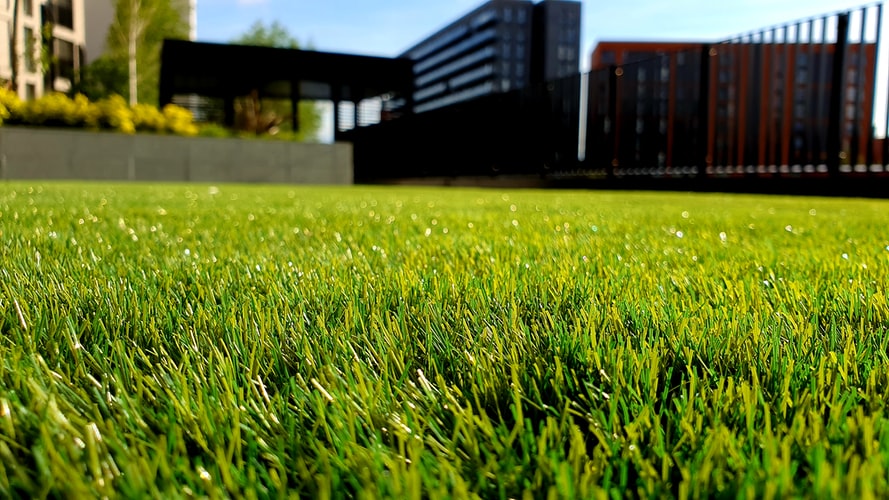
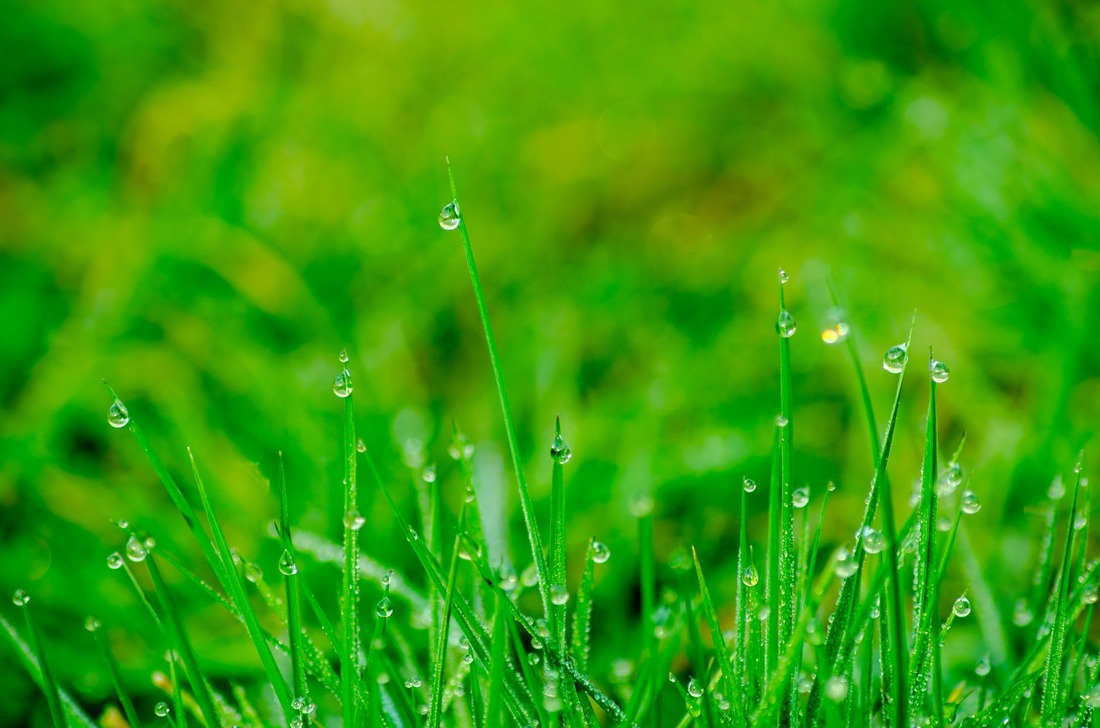
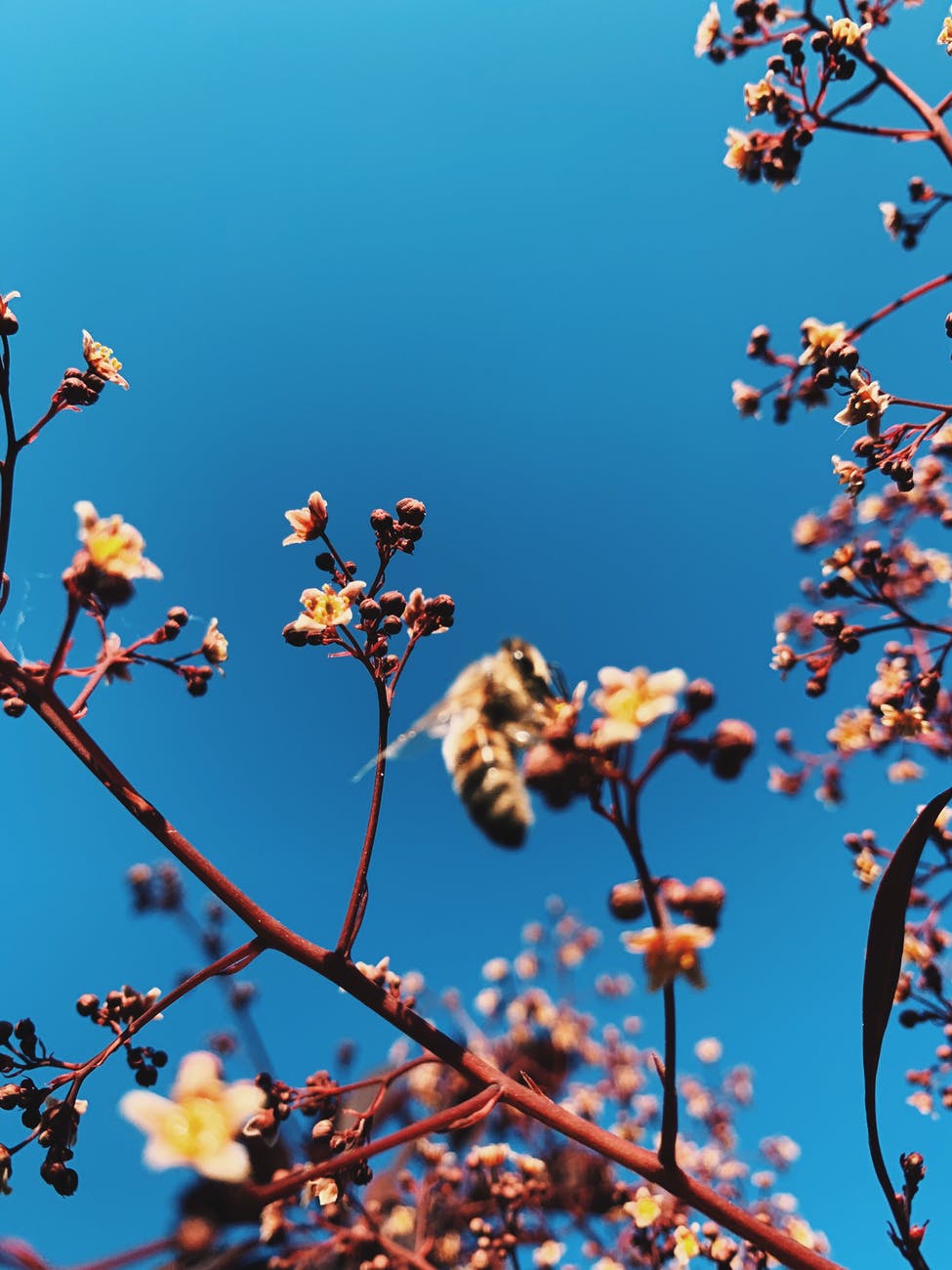


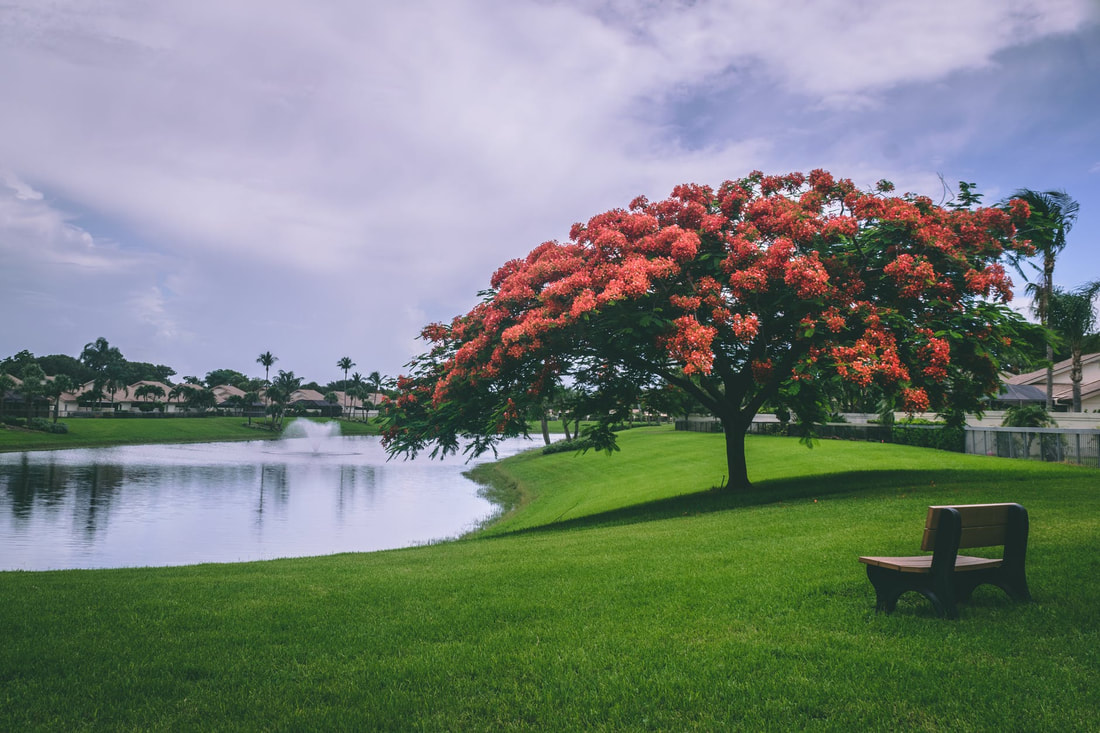
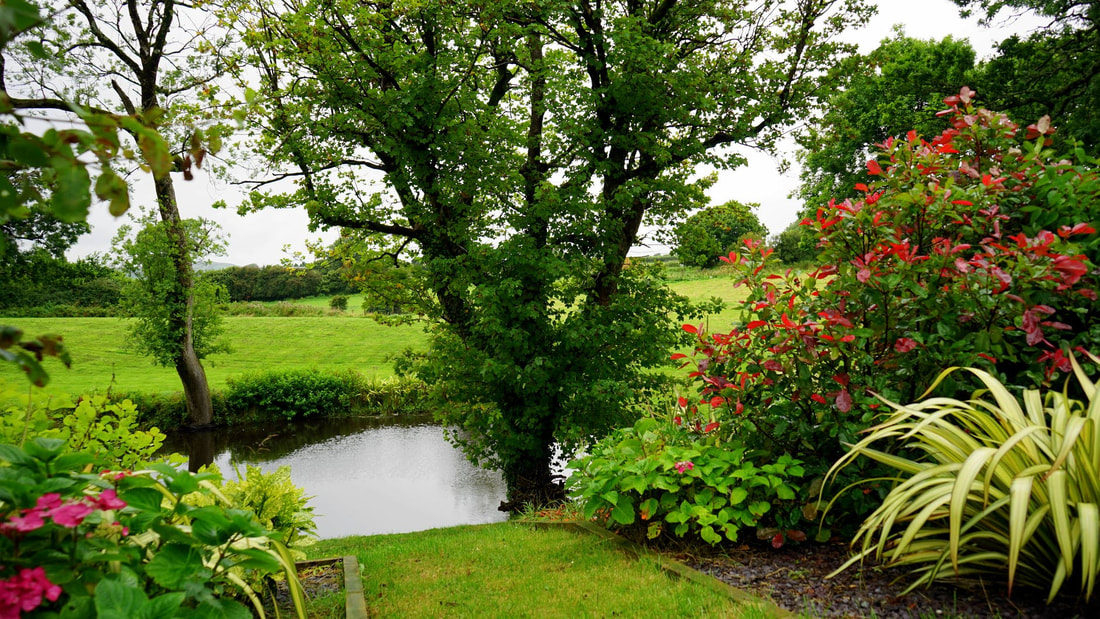




 RSS Feed
RSS Feed